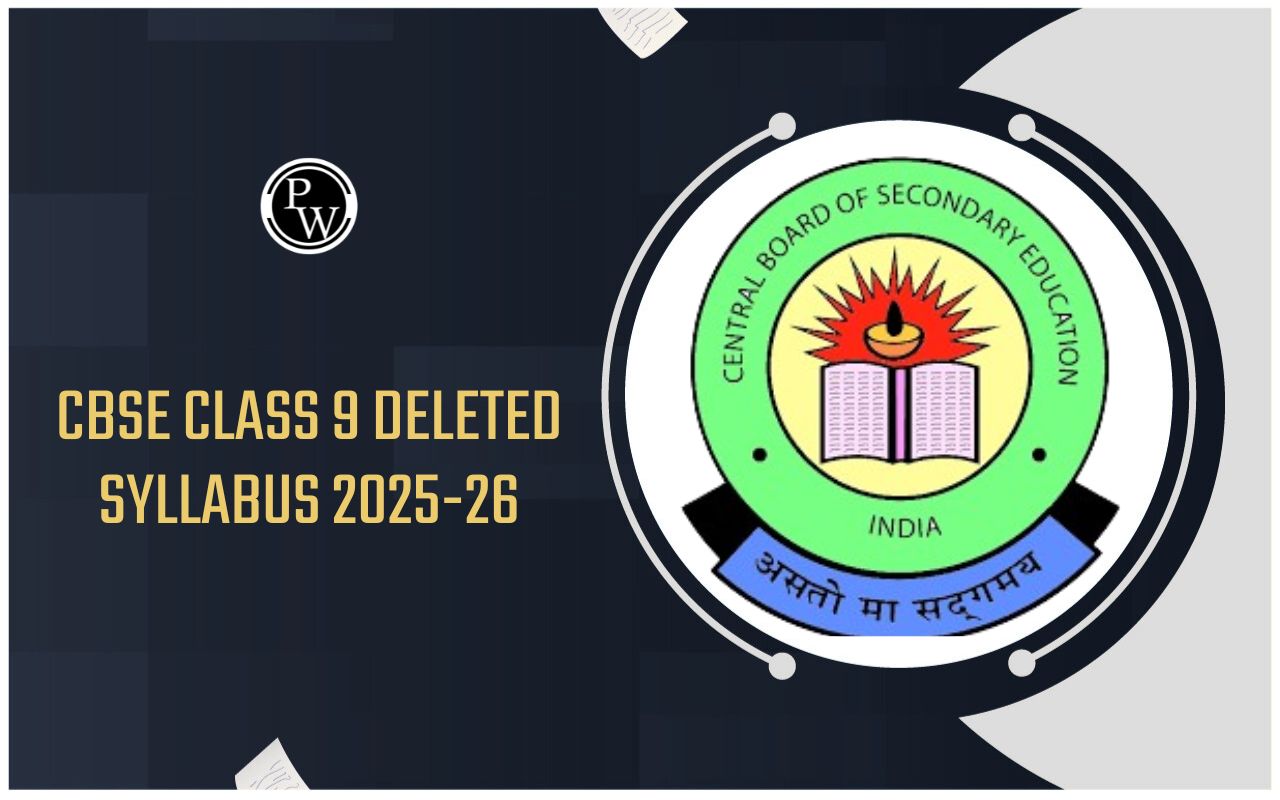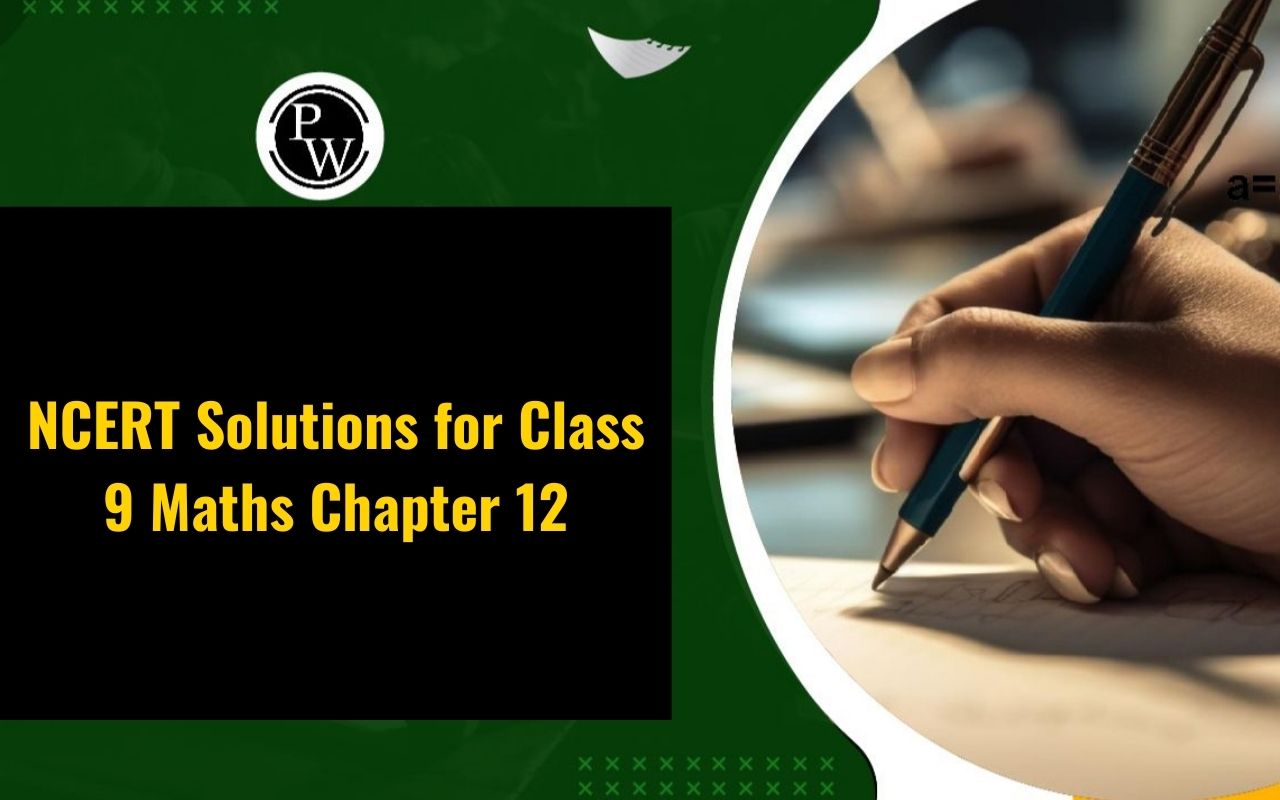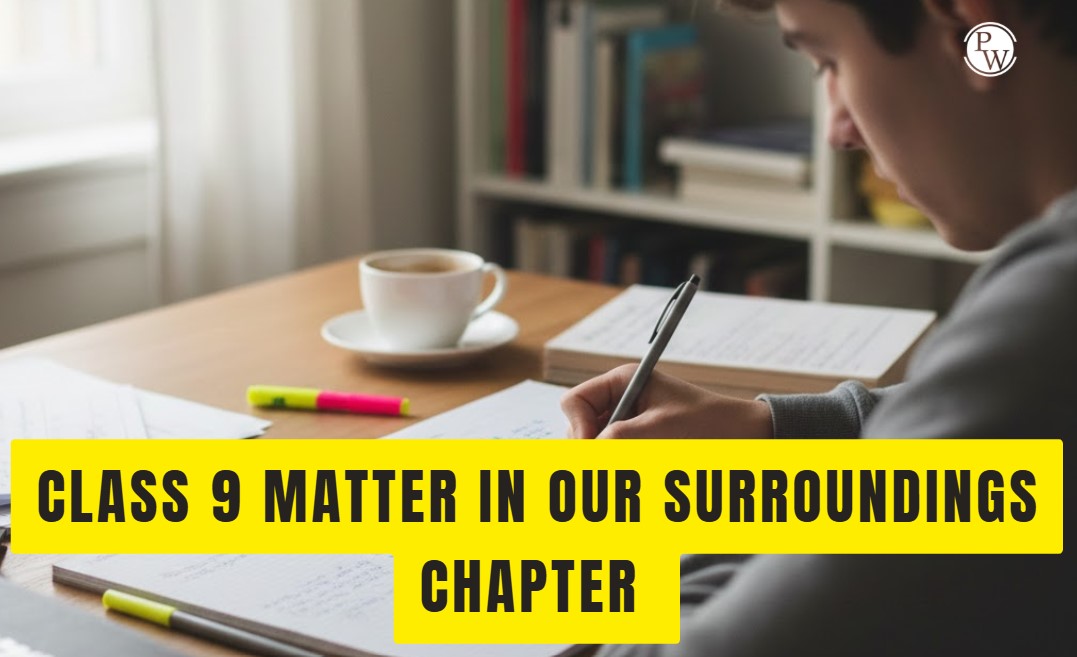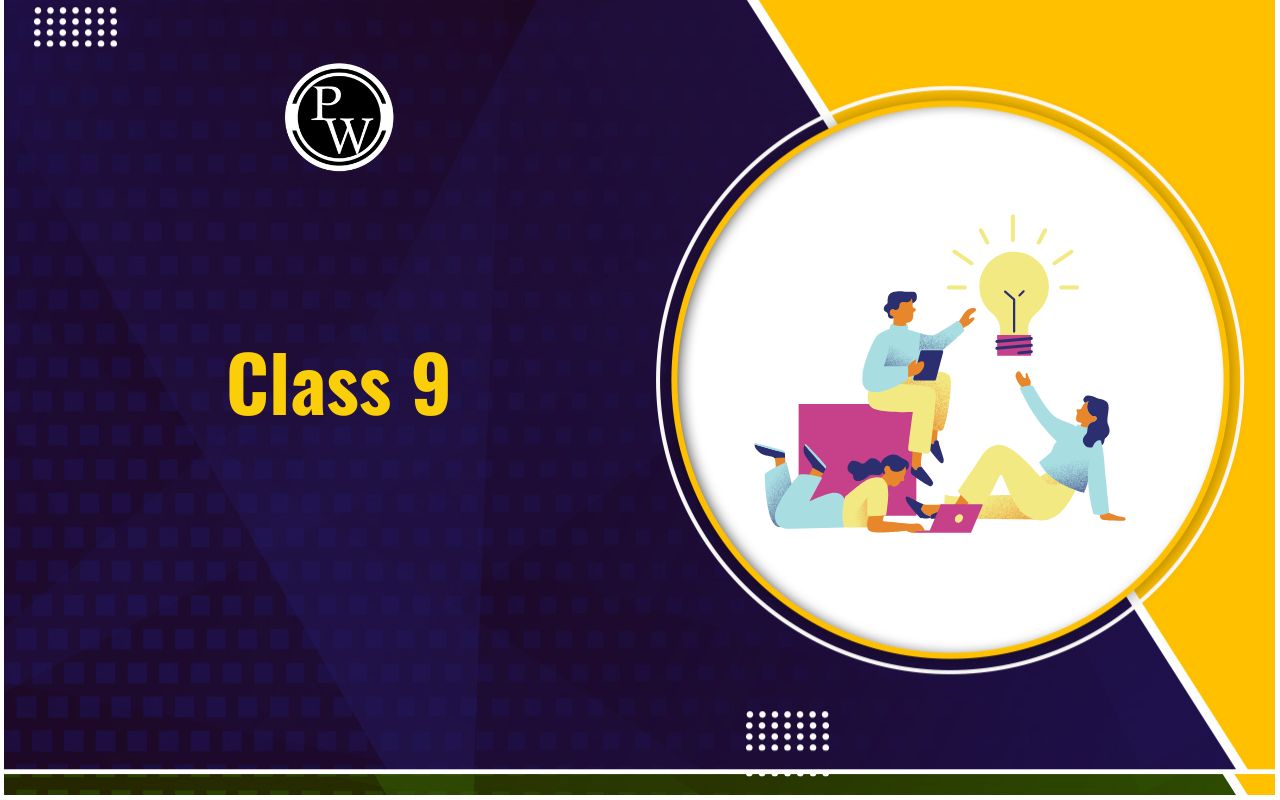
RD Sharma Solutions Class 9 Maths Chapter 18: In RD Sharma Solutions for Class 9 Maths Chapter 18, you'll learn about the Surface Area and Volume of a Cuboid and Cube in simple terms. This chapter helps you understand how to find the surface area and volume of these shapes.
The solutions give clear explanations and step-by-step guidance to make it easy for you to learn. By using these solutions, you'll get better at solving problems and understanding geometry. They're like a helpful resource to improve your math skills and do well in your studies.CBSE Class 9 Science Syllabus 2024-25
RD Sharma Solutions Class 9 Maths Chapter 18 Surface Area and Volume of a Cuboid and Cube PDF
Here we have provided RD Sharma Class 9 Solutions Maths Chapter 18 solutions for the students to help them ace their examinations. Students can refer to these solutions and practice these questions to score better in the exams.RD Sharma Solutions Class 9 Maths Chapter 18 PDF
RD Sharma Solutions Class 9 Maths Chapter 18 Surface Area and Volume of a Cuboid and Cube
RD Sharma Solutions Class 9 Maths Chapter 18 Surface Area and Volume of a Cuboid and Cube Exercise 18.1 Page No: 18.14
Question 1: Find the lateral surface area and total surface area of a cuboid of length 80 cm, breadth 40 cm and height 20 cm.
Solution:
Given, Dimensions of a cuboid: Length (l) = 80 cm Breadth (b) = 40 cm Height (h) = 20 cm We know that, Total Surface Area = 2[lb + bh + hl] By substituting the values, we get = 2[(80)(40)+(40)(20)+(20)(80)] = 2[3200+800+1600] = 2[5600] = 11200 Therefore, Total Surface Area = 11200 cm 2 Now, Lateral Surface Area = 2[l + b]h = 2[80+40]20 = 40[120] = 4800 Thus, Lateral Surface Area is 4800 cm 2 .CBSE Class 10 Result 2024 Expected To Be Out Soon
Question 2: Find the lateral surface area and total surface area of a cube of edge 10 cm.
Solution:
Side of a Cube = 10 cm (Given) Formula for Cube Lateral Surface Area = 4 side 2 Cube Lateral Surface Area = 4(10 x 10) = 400 cm 2 Total Surface Area = 6 Side 2 = 6(10 2 ) = 600 cm 2Question 3: Find the ratio of the total surface area and lateral surface area of a cube.
Solution:
Total Surface Area of the Cube (TSA) = 6 Side 2 Lateral surface area of the Cube (LSA) = 4 Side 2 Now, Ratio of TSA and LSA = (6 Side 2 )/ (4 Side 2 ) = 3/2 or 3:2.Question 4: Mary wants to decorate her Christmas tree. She wants to place the tree on a wooden block covered with colored paper with a picture of Santa Claus on it. She must know the exact quantity of paper to buy for this purpose. If the box has length, breadth, and height as 80 cm, 40 cm and 20 cm respectively. How many square sheets of paper of side 40 cm would she require?
Solution:
The dimensions of the wooden block are: Length (l) = 80cm Breadth (b) = 40cm Height (h) = 20cm Surface Area of the wooden box = 2[lb + bh + hl] = 2[(80×40)+(40×20)+(20×80)] = 2[5600] = 11200 Surface Area of the wooden box is 11200 cm 2 The Area of each sheet of the paper = 40×40 cm 2 = 1600 cm 2 Now, The total number of sheets required = (Surface area of the box )/(Area of one sheet of paper) = 11200/1600 = 7 Therefore, Marry would require 7 sheets.Question 5: The length, breadth, and height of a room are 5 m, 4 m and 3 m respectively. Find the cost of white washing the walls of the room and the ceiling at the rate of Rs 7.50 m 2 .
Solution:
Formula: Total Area to be washed = lb + 2(l + b)h ….(1) Where, l = length , b = breadth and h = height. From given: Length = l = 5 m Breadth = b = 4 m Height = h = 3 m Total area to be white washed = (5×4) + 2(5 + 4)3 (using (1)) = 74 Total area to be white washed is 74 m 2 Now, cost of white washing 1 m 2 is Rs. 7.50 (Given) Therefore, the cost of white washing 74 m 2 = (74 x 7.50) = Rs. 555Question 6: Three equal cubes are placed adjacently in a row. Find the ratio of a total surface area of the new cuboid to that of the sum of the surface areas of the three cubes.
Solution:
Let breadth of the cuboid = a Then, length of the new cuboid = 3a and Height of the new cuboid = a Now, Total surface area of the new cuboid (TSA) = 2(lb+bh+hl) = 2(3a x a + a x a + a x 3a) = 14a 2 Again, Total Surface area of three cubes = 3 x (6 side 2 ) = 3 x 6a 2 = 18a 2 Therefore, ratio of a total surface area of the new cuboid to that of the sum of the surface areas of the three cubes = 14a 2 /18a 2 = 7/9 or 7:9 Therefore, required ratio is 7:9. Answer.Question 7: A 4 cm cube is cut into 1 cm cubes. Calculate the total surface area of all the small cubes.
Solution:
Edge of the cube = 4 cm (Given) Volume of the cube = Side 3 = 4 3 = 64 Volume of the cube is 64cm 3 Again, Edge of the cube = 1 cm 3 So, Total number of small cubes = 64cm 3 /1cm 3 = 64 And, total surface area of all the cubes = 64 x 6 x 1 = 384 cm 2Question 8: The length of a hall is 18 m and the width 12 m. The sum of the areas of the floor and the flat roof is equal to the sum of the areas of the four walls. Find the height of the hall.
Solution:
Dimensions of the hall are: Length = 18m Width = 12m From statement: Area of the floor and the flat roof = Sum of the areas of four walls …(1) Using respective formulas and given values, we have Area of the floor and the flat roof = 2lb = 2 x 18 x 12 = 432 sq/ft …(2) Sum of the areas of four walls = (2 x 18h + 2 x 12h)sq/ft …(3) Using equation (2) and (3) in (1), we get 432 = 2 x 18h + 2x12h 18h + 12h = 216 or h = 7.2 Therefore, height of the hall is 7.2 m.Question 9: Hameed has built a cubical water tank with lid for his house, with each other edge 1.5 m long. He gets the outer surface of the tank excluding the base, covered with square tiles of side 25 cm. Find how much he would spend for the tiles if the cost of tiles is Rs 360 per dozen.
Solution:
Edge of the cubical tank = 1.5m or 150 cm Surface area of the cubical tank (5 faces) = 5 x Area of one Face = 5 x (150 x 150) cm 2 …….(1) Find area of each square tile: Side of tile = 25 cm (given) Area of one tile = 25 x 25 cm 2 …….(2) Now, Number of tiles required = (Surface Area of Tank ) / (Area of each Tile) = (5×150×150) / 25×25 = 180 Find cost of tiles: Cost of 1 dozen tiles, i.e., cost of 12 tiles = Rs. 360 Therefore, cost of one tile = Rs.360/12 = Rs.30 So, the cost of 180 tiles = 180 x 30 = Rs. 5400Question 10: Each edge of a cube is increased by 50%. Find the percentage increase in the surface area of the cube.
Solution:
Let ‘a’ be the edge of a cube. Surface area of the cube having edge ‘a’ = 6a 2 …..(1) As given, a new edge after increasing existing edge by 50%, we get The new edge = a + 50 a /100 = 3a/2 Surface area of the cube having edge ‘3a/2’ = 6 x (3a/2) 2 = (27/2) a 2 ……(2) Subtract equation (1) from (2) to find the increase in the Surface Area: Increase in the Surface Area = (27/2) a 2 – 6a 2 = (15/2)a 2 Now, Percentage increase in the surface area = ( (15/2)a 2 / 6a 2 ) x 100 = 15/12 x 100 = 125% Therefore, percentage increase in the surface area of a cube is 125.RD Sharma Solutions Class 9 Maths Chapter 18 Surface Area and Volume of a Cuboid and Cube Exercise 18.2 Page No: 18.29
Question 1: A cuboidal water tank is 6 m long, 5 m wide and 4.5 m deep. How many liters of water can it hold?
Solution:
Dimensions of a cuboidal water tank: Length = l = 6m Breadth = b = 5m Height = h = 4.5m We know, Volume of the cuboidal water tank = lbh By substituting the values, we get Volume = 6×5×4.5 = 135 Therefore, Volume of the cuboidal water tank is 135 m 3 Convert into liters: We know; 1 m 3 = 1000 liters So, 135m 3 = (135×1000)liters = 135000 liters Hence, the tank can hold 1,35,000 liters of water.Question 2: A cuboidal vessel is 10 m long and 8 m wide. How high must it be made to hold 380 cubic meters of a liquid?
Solution:
Dimensions of a cuboidal vessel: Length = l = 10 m Breadth = b = 8 m Volume of the vessel = 380 m 3 (given) Let ‘h’ be the height of the cuboidal vessel. We know, Volume of cuboidal vessel = lbh lbh = 380 m 3 or 10×8×h = 380 or h = (380)/(10×8) or h = 4.75 Therefore, height of the vessel should be 4.75 m.Question 3: Find the cost of digging a cuboidal pit 8 m long, 6 m broad and 3 m deep at the rate of Rs 30 per m 3 .
Solution:
Dimensions of a cuboidal pit: Length = l = 8 m Breadth = b = 6 m Depth or height = h = 3 m We know, Volume of the Cuboidal pit = lbh = 8×6×3 = 144 Volume of the Cuboidal pit is 144 m 3 Now, find the cost: Cost of digging 1 m 3 = Rs. 30 (Given) Cost of digging 144 m 3 = 144 x 30 = Rs. 4320Question 4: If V is the volume of a cuboid of dimensions a, b, c and S is its surface area, then prove that

Solution:
Dimensions of a cube are: Length = l = a Breadth = b = b Height = h = c We know, Volume of the cube (V) = lbh = a×b×c Or V = abc ….(1) Again, Surface area of the cube (S) = 2 (lb+bh+hl) or S = 2 (ab+bc+ca) ……(2) Now, Hence Proved.
Hence Proved.
Question 5: The areas of three adjacent faces of a cuboid are x, y and z. If the volume is V, Prove that V 2 = xyz.
Solution:
Let a, b and c be the length, breadth, and height of the cuboid. Then, x = ab, y = bc and z = ca [Since areas of three adjacent faces of a cuboid are x, y and z (Given)] And xyz = ab × bc × ca = (abc) 2 ……(1) We know, Volume of a cuboid ( V ) = abc …..(2) From equation (1) and (2), we have V 2 = xyz Hence proved.Question 6: If the areas of three adjacent face of a cuboid are 8 cm 2 , 18 cm 2 and 25 cm 2 . Find the volume of the cuboid.
Solution:
Let x, y, z denote the areas of three adjacent faces of a cuboid, then, x = l×b = 8 cm 2 y = b×h = 18 cm 2 z = l×h = 25 cm 2 Where l = length of a cuboid, b = breadth of a cuboid and h = height of a cuboid xyz = 8 × 18 × 25 = 3600 ….(1) Volume of cuboid (V) = lbh From above results, we can write, xyz = lb×bh×lh = (lbh) 2 = V 2 . …..(2) Form equation (1) and (2), We get V 2 = 3600 or V = 60 Thus, Volume of the cuboid is 60 cm 3Question 7: The breadth of a room is twice its height, one half of its length and the volume of the room is 512 cu.dm. Find its dimensions.
Solution:
Let, l, b and h are the length, breadth and height of the room. As per given statement, b = 2h and b = l/2 ⇒ l/2 = 2h or l = 4h Now, we have l = 4h and b = 2h We know, Volume of the room = lbh Volume of the room = 512dm 3 (given) So, 4h×2h×h=512 or h 3 =64 or h=4 Therefore, Length of the room (l) = 4h = 4×4 = 16 dm Breadth of the room (b) = 2h = 2×4 = 8 dm And Height of the room (h) = 4 dm.Question 8: A river 3 m deep and 40 m wide is flowing at the rate of 2 km per hour. How much water will fall into the sea in a minute?
Solution:
Water flow of a river = 2 km per hour = (2000/60) m/min or (100/3 )m/min [we know: 1 km = 1000 m and 1 hour = 60 mins] Depth of the river (h) = 3m Width of the river (b) = 40m Volume of the water flowing in 1 min = 100/3 × 40 × 3 = 4000 m 3 Or 4000 m 3 = 4000000 litres Therefore, in 1 minute 4000000 litres of water will fall in the sea.Question 9: Water in a canal 30 dm wide and 12 dm deep, is flowing with a velocity of 100 km every hour. What much area will it irrigate in 30 minutes if 8 cm of standing water is desired?
Solution:
Water in the canal forms a cuboid of Width (b) and Height (h). b = 30dm = 3m and h = 12dm = 1.2m Here, Cuboid length = distance travelled in 30 min with a speed of 100 km per hour. Therefore, Length of the cuboid (l) = 100 × 30/60 = 50000 metres Volume of water used for irrigation = lbh = 50000×3×1.2 m 3 Water accumulated in the field forms a cuboid of base area equal to the area of the field and height = 8/100 metres (Given) Therefore, Area of field × 8/100 = 50000 × 3 × 1.2 Area of field = (50000 × 3 × 1.2) × 100/8 = 2250000 Thus, area of field is 2250000 m 2 .Question 10: Three metal cubes with edges 6cm, 8cm, 10cm respectively are melted together and formed into a single cube. Find the volume, surface area and diagonal of the new cube.
Solution:
Let us consider, ‘x’ be the length of each edge of the new cube. Volume of cube = x 3 ⇒ x 3 = (6 3 + 8 3 + 10 3 )cm 3 or x 3 = 1728 or x=12 Volume of the new cube = x 3 = 1728 cm 3 Surface area of the new cube = 6(side) 2 = 6(12) 2 = 864 cm 2 And, diagonal of the newly formed cube = √3a = 12√3 cmQuestion 11: Two cubes, each of volume 512 cm 3 are joined end to end. Find the surface area of the resulting cuboid.
Solution:
Let ‘a’ be the side of a cube. Volume of the cube = 512cm 3 (Given) We know volume cube = (side) 3 ⇒ a^3 = 512 or a = 8 Each side of a cube is 8 cm. Now, Dimensions of the new cuboid formed are: Length (l) = 8+8 = 16 cm, Breadth (b) = 8 cm and Height (h) = 8 cm Surface area = 2(lb+bh+hl) = 2 (16×8+8×8+16×8) = 640 cm 2 Therefore, Surface area of a cube is 640 cm 2 .Question 12: Half cubic meter of gold-sheet is extended by hammering so as to cover an area of 1 hectare. Find the thickness of the gold-sheet.
Solution:
Volume of gold-sheet = 1/2 m 3 or 0.5 m 3 (Given) Area of the gold-sheet = 1 hectare i.e. 10000 m 2 Thickness of gold sheet = (Volume of solid)/(Area of gold sheet) = 0.5 m 3 /10000 m 2 = m/20000 Or Thickness of gold sheet = 1/200 cm [1 m = 100 cm] Therefore, thickness of the silver sheet is 1/200 cm.Question 13: A metal cube of edge 12 cm is melted and formed into three smaller cubes. If the edges of the two smaller cubes are 6 cm and 8 cm, find the edge of the third smaller cube.
Solution:
From the given statement, we have Volume of the large cube = v1 + v2 + v3 Let the edge of the third cube be ‘x’ cm 12 3 = 6 3 + 8 3 + x 3 [Using formula, Volume of cube = (side) 3 ] 1728 = 216 + 512 + x 3 or 1000 = x 3 or x = 10 Therefore, length of the third side is 10 cm.RD Sharma Solutions Class 9 Maths Chapter 18 Surface Area and Volume of a Cuboid and Cube Exercise VSAQs Page No: 18.35
Question 1: If two cubes each of side 6 cm are joined face to face, then find the volume of the resulting cuboid.
Solution:
Side of two equal cubes = 6 cm (Given) When we join, two cubes face to face formed a cuboid. Dimensions of a cuboid are: Length = 6 cm + 6 cm = 12 cm Breadth = 6 cm Height = 6 cm Therefore, volume of cuboid = lbh = 12 × 6 × 6 = 432 cm 3Question 2: Three cubes of metal whose edges are in the ratio 3 : 4 : 5 are melted down into a single cube whose diagonal is 12√3 cm. Find the edges of three cubes.
Solution:
Given: Ratio of edge of 3 cubes = 3 : 4 : 5 Let edges are = 3x, 4x and 5x Diagonal of new cube formed = 12√3 cm (given) Volume of new cube = Volume of figure obtained after combining three cubes = (3x) 3 + (4x) 3 + (5x) 3 = 216 x 3 …(1) New diagonal of a cube = √3a = 12√3 or a = 12 So, side of new cube is 12 cm. Volume of cube with side 12 cm = (12)^3 …(2) From equation (1) and (2), we have (12)^3 = 216 x 3 Therefore, measure of edges are :
3x = 3×2 = 6 cm
4x = 4×2 = 8cm
5x = 5×2 = 10 cm
Therefore, measure of edges are :
3x = 3×2 = 6 cm
4x = 4×2 = 8cm
5x = 5×2 = 10 cm
Question 3: If the perimeter of each face of a cube is 32 cm, find its lateral surface area. Note that four faces which meet the base of a cube are called its lateral faces.
Solution:
Perimeter of each face of a cube = 32 cm (given) Let ‘a’ be the edge of a cube. We know, Perimeter of each face of a cube = 4a ⇒ 4a = 32 or a = 8 Side of a cube is 8 cm. Now, Lateral surface area of cube = 4a 2 = 4×8 2 = 256 cm 2 .| CBSE Class 9 Maths Syllabus | CBSE Class 9 Science Syllabus |
| CBSE Class 9 Computer Application Syllabus | CBSE Class 9 Social Science Syllabus |
RD Sharma Class 9 Solutions Maths Chapter 18 FAQs
What topics are covered in RD Sharma Class 9 Maths Chapter 18?
How can RD Sharma Solutions help with Chapter 18?
Are RD Sharma Solutions suitable for self-study?










